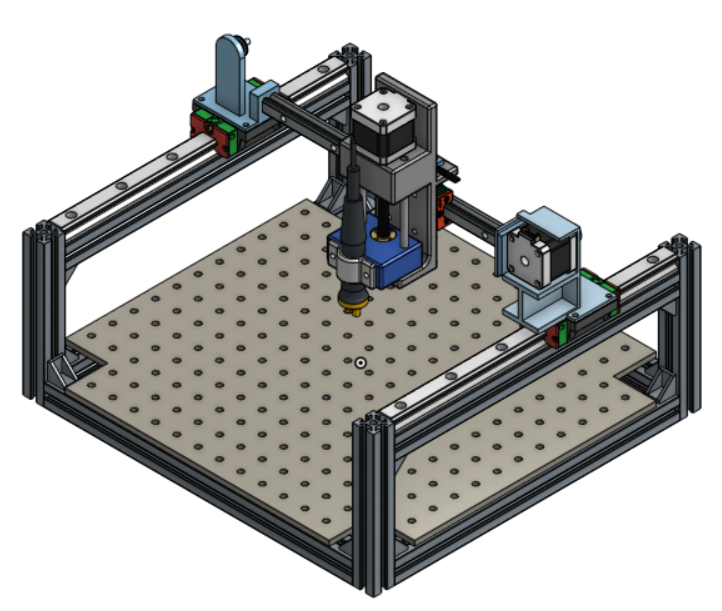CNC Wood Burner (WIP)
Skills Used: Onshape, Gantry Design, Stepper Motor Integration , GRBL Motion Control, Mechanical–Electrical Integration, Laser Cutting, 3D Printing
Project Description
A custom 3-axis CNC machine that uses a controllable wood burning tool to create programmable artwork and engraved text. This is the final project for Principles of Integrated Engineering (PIE), combining mechanical design, electronics, and software into a single automated system.
Problem
For our PIE final project, our team set out to design a CNC controlled wood burning machine capable of automatically drawing patterns, letters, and images onto wooden surfaces. Unlike a normal CNC router, a wood burning device requires precise vertical force control and stable temperature management to keep burn depth consistent. Our challenge was to build a full CNC motion platform, integrate a heating tool safely, and stay within the course’s fabrication, time, and budget constraints ($250).
Method
Mechanical Design
The machine uses a classic Cartesian gantry architecture built from:
- 80/20 aluminum extrusions (frame + gantry)
- HG-series linear rails and blocks for smooth X and Y motion
- MDF baseboard, laser-cut for component mounting
- 3D-printed PLA brackets for the burner mount, motor housings, and pulley supports
All mechanical CAD was created in Onshape, allowing the team to design collaboratively and iterate quickly.
Motion System
Motion is driven by:
- NEMA 17 stepper motors
- GT2 belts and pulleys for X/Y drive
- TB6600 stepper drivers
- A Z-axis lead screw to lift to raise and lower the burning head
The system runs on GRBL firmware, controlled through Universal Gcode Sender (UGS). This allows us to import G-code toolpaths and move the machine as if it were a standard CNC router.
I contributed to:
- Designing and assembling the mechanical frame
- Creating mounts for motors, belts, and the wood burning pen
- Determining how the Z-axis and burner contact mechanism should be integrated
- Cutting and drilling the 80/20 extrusions
Fabrication
- Aluminum extrusions were cut on a bandsaw
- The baseboard was laser-cut MDF
- Component brackets were 3D printed (PLA)
- Frame assembly used T-slot hardware and squaring jigs
Results
Current Status (WIP)
- CAD complete
- Mechanical frame assembled
- Motors and drivers wired and moving under GRBL
- Z-axis and burner-mount prototypes printed
Remaining tasks include:
- Attaching the wood-burning tool to the Z-axis
- Temperature control and insulation
- Final wiring cleanup
- G-code testing with real burn patterns
This project is still in progress, with full system integration and test burns planned next.

